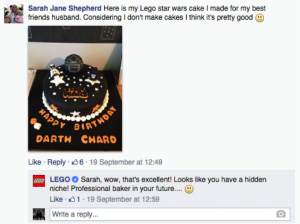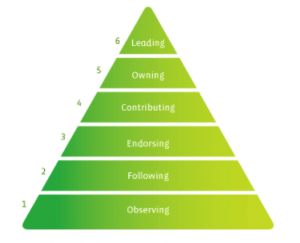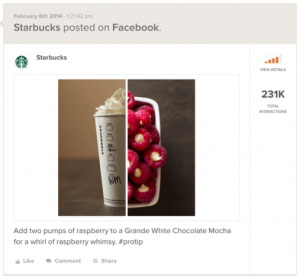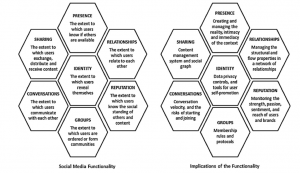Find out what drives us social media users to Like or Unlike Brands on Facebook
Do you have a profile on the popular free social networking website Facebook? Do you know anyone that doesn’t? No? That’s because as of the 3rd quarter of 2014, Facebook had 1.35 billion active users and we can be sure that this number is growing!
‘Friendships’ on Facebook can be taken very seriously and it seems like the entire world has been turned on its axis when you realise that someone who you considered a friend, has deleted, unliked or in the worst case scenario…. unfriended you. The same can be said for Business’s on Facebook and as much as we try to act cool, it is a big deal. So what drives people to do it? Easy enough… you irritate them!
Now here are some interesting statistics for you to consider taken from a survey conducted by Lab42. Close to 90% of users on Facebook say that they Like at least one brand on Facebook with a huge 50% finding that the Brands Facebook page is more useful and informative than the company website. Coca Cola has the largest audience on this social networking platform with a whopping 94,035,545 total fans, which isn’t a surprise as its simply one of the most recognisable brands in the world! (we all know it’s Christmas when we hear the jingles of the Coca Cola advert!)
Facebook represents a way for individuals to continue their offline relationships and conversations in an online medium (Hollenbeck &Kaikati, 2012). This convenient toolbox allows users to congregate into like groups and therefore continuously reinforces an array of meaningful associations strengthening an identity. However, it is important to recognise that this can also create ‘not me’ identities as Hollenbeck and Kaikati, (2012) states which can have a negative effect on the engagement with a brand.
Unlike
Opinionated and controversial posts, bragging about yourself and begging for likes are all ways in which your so called friends are more than happy to find that delete button, but as a brand on Facebook, what causes its fans to bolt?
- Brands post too frequently
People don’t want to see an advertisement everytime they look at their timeline.
- Repeating the same posts
Companies can make the mistake of repeating their messages in 2-4 hour intervals with the hope of increasing visibility.
- Stopped liking the brand in ‘real life’
This can be down to bad customer experience.
- Boring content
Instead brands should be highlighting specific products and messages and conveying them in an innovative way.
On the plus side, social media users still find Facebook Brand pages highly valuable. I hope you aren’t bored with the statistics because there’s more heading your way! Using the same study for the purpose of consistency, 87% of people on Facebook Like brands with 82% thinking it is a good place to interact with brands and finally 75% of people feeling more connected to a brand.
So now we know the significance of Facebook brand pages, how do we ensure that people don’t do the unthinkable and Unlike them? Easy enough… don’t irritate them!
- Monitor the frequency of your posts
Reduces potential annoyance and if need be post different messages in-between to avoid repetition
- Page Post Targeting
Targeting your posts to specific audiences based on gender/location etc increases the relevance and reduces irritation.
Like
Now lets get to the interesting stuff, what drives us to engage and Like a brand on Facebook?
- Coupons & Discounts
The number one motivation, according to Lab42 is Coupons and Discounts.
- Interact on a Brand’s page
Through engaging and different content – funny content always engages with fans.
- To learn about new products
Firms can also ask users for ideas or new features they would like to see – great idea as a mini focus group
Take a look at this interesting blog, on 8 Surefire Ways To Increase Engagement!
Popular Brands on Facebook
Lego is exceptional at creating unique content for each of its social channels, inspiring fans to follow them on a variety of platforms without getting bored of the same message.
For example, the Facebook competition shows strong commitment to engaging in conversation. Personal communication and value of the competition revolve around being personal, which follows the pyramid of engagement from Guosong Shao (2009) where the ultimate goal is the producing for self-expression and actualisation.
The strategy is to debut its latest coffee concoctions on Facebook – product marketing packaged in the lifestyle of Starbucks engaging the consumers of it’s 38M likes. They have many tabs including employment oppurtunities/interactive consumer polls -providing great information without doing any annoying selling!
These brands strive to create and consolidate fan communities (Pereira et al, 2014). Therefore, companies must be willing to devote continued and dynamic resources towards the brand profile, supplying users with unique content they need and want once involved with the brand on Facebook (Pereira et al, 2014).
Troubled Brands on Facebook
- Dell
Blogger Jeff Jarvis expressed negative experiences with his new Dell laptop and the brand didn’t respond swiftly enough causing a big debate on Facebook that hurt Dells online reputation.
- Nestle
Deleting a video and critical comments regarding purchase policies for palm oil led to accusations of a lack of transparency. This is a case of not allocating appropriate resources to manage their brand presence.
(Gamboa & Concalves, 2014)
Critically analysing where these Brands went wrong, it is quite apparent to see that they have not conducted enough prior research before interacting with the essential target customer base. For example, responding swiftly is a basic must when interacting on social media in order to create positive perceptions. This could have easily been avoided and therefore brand reputation would not have been damaged.
On the other hand, having the resources available at all times ready to respond can be costly to an organisation. Perhaps Dell were short staffed that day? and perhaps a contingency plan was not put into place.. something that hopefully Dell have now rectified.
Another factor to consider for Brands is how much time consumers are spending on social media today. Here’s an insightful blog from Business Insider looking at the surprising facts about how much times is spent on the major social media networks.
A finishing note:
Looking at the above honeycomb of social media framework by Kietzmann, Hermkens, McCarthy & Silvestre, (2011) this is a great way for brands to really see how different building blocks integrate and play imperative roles on one another. Take a look at this academic paper here! This can ensure the correct preparation is done to enhance the brand engagement on Facebook and on other social media platforms, to avoid becoming a laughing stock or annoyance for consumers online.
References:
Gamboa, A. & Goncalves, H. (2014). “Customer loyalty through social networks: Lessons from Zara on Facebook”. Business Horizons, Vol 57, Iss 6, pp709-717
Hollenbeck, C. R., & Kaikati, A. M. (2012). Consumers’ use of brands to reflect their actual and ideal selves on Facebook. International Journal of Research in Marketing, 29(4), 395-405
Kietzmann, J. H., Hermkens, K., McCarthy, I. P., & Silvestre, B. S. (2011). Social media? Get serious! Understanding the functional building blocks of social media. Business horizons, 54(3), 241-251
Pereira, H., Salgueiro, M., & Mateus, I., (2014). “Say yes to Facebook and get your customers involved! Relationships in a world of social networks” Business Horizons, Vol 57, Iss 6, pp695-702
Shao, G. (2009) “Understanding the appeal of user‐generated media: a uses and gratification perspective”, Internet Research, Vol. 19 Iss: 1, pp.7 – 25



